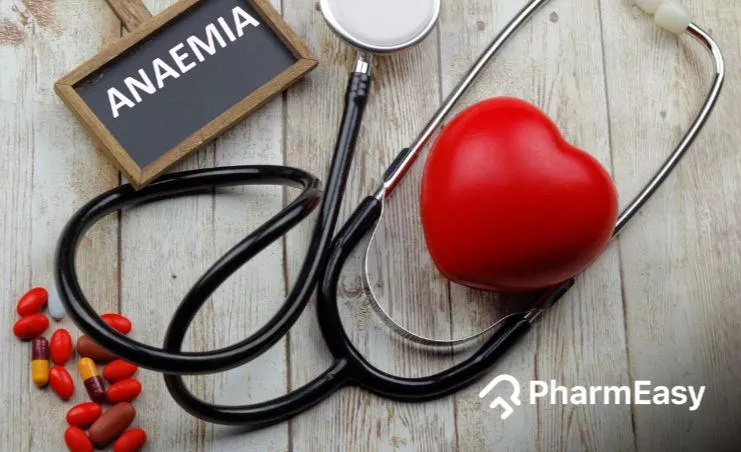Treatment Options for Anaemia
By Dr. Nikita Toshi +2 more

Get,

to manage your symptom
Get your,


4 Cr+ families
benefitted

OTP sent to 9988776655



You’ve successfully subscribed to receive
doctor-approved tips on
Whatsapp

Get ready to feel your best.

Hi There,
Download the PharmEasy App now!!


Register to Avail the Offer
Send OTPBy continuing, you agree with our Privacy Policy and Terms and Conditions

Hi There,
Sign up on PharmEasy now!!
Trusted by 4 crore+ families

OTP sent to 9988776655



You have unlocked 25% off on medicines




Code: NU25
By Dr. Nikita Toshi +2 more
Table of Contents
Anaemia is a condition that occurs when the quality or quantity of red blood cells in the body diminishes significantly. This hinders the natural supply of oxygen to the cells of the body, and this makes the person feel weak, tired and unable to breathe properly. In this article, we will explore what are the possible treatment options for anaemia with a focus on iron deficiency anaemia.

The first step of anaemia diagnosis starts with setting up a consultation with a specialist, preferably a haematologist. They will ask you about your medical history, conduct a physical examination and prescribe a few blood tests and imaging tests or biopsy if required. The doctor will evaluate your symptoms and try to link your anaemia condition with three major causes – reduced or faulty production of red blood cells, blood loss and destruction of red blood cells.
The blood tests that your doctors recommend help to confirm the condition and point out the underlying reasons:
Here are some common tests you may expect to undergo:
Other tests to rule out a viral infection, autoimmune conditions, hemolytic anaemia, endocrine issues, kidney disorders, etc., can also be advised.
The healthcare provider can only prescribe a treatment path for you after decoding the type and cause of the anaemia condition. There are different types of anaemia, of which the most common is iron deficiency anaemia.
Without iron, the body is not able to create haemoglobin and normal red blood cells.
Other Treatment Procedures for Anaemia that do not respond to the above-listed treatments:
This is a safe medical procedure in which healthy blood is administered to the patient through intravenous insertion into the blood vessels. This procedure replaces blood lost through injury or surgery or when the body is not making it to adequate levels.
A blood or bone marrow transplant is also known as a hematopoietic stem cell transplant, in which defective blood-forming stem cells are replaced with healthy ones. This procedure requires you to
If you have moderate to mild anaemia, the doctor can prescribe the following supplements:
Treatment options for anaemia generally involve taking supplements and tweaking one’s diet. If the cause of blood loss is bleeding, then surgery might be required to stop it. Issues within the bone marrow can also lead to abnormal or insufficient production of healthy red blood cells. In that case, special medications and injections might be required to stimulate certain hormones that produce red blood cells. Symptoms of anaemia should not be ignored; consult a haematologist for the best-needed treatment.
Disclaimer: The information provided here is for educational/awareness purposes only and is not intended to be a substitute for medical treatment by a healthcare professional and should not be relied upon to diagnose or treat any medical condition. The reader should consult a registered medical practitioner to determine the appropriateness of the information and before consuming any medication. PharmEasy does not provide any guarantee or warranty (express or implied) regarding the accuracy, adequacy, completeness, legality, reliability or usefulness of the information; and disclaims any liability arising thereof.
Links and product recommendations in the information provided here are advertisements of third-party products available on the website. PharmEasy does not make any representation on the accuracy or suitability of such products/services. Advertisements do not influence the editorial decisions or content. The information in this blog is subject to change without notice. The authors and administrators reserve the right to modify, add, or remove content without notification. It is your responsibility to review this disclaimer regularly for any changes.

Leave your comment...
Comments